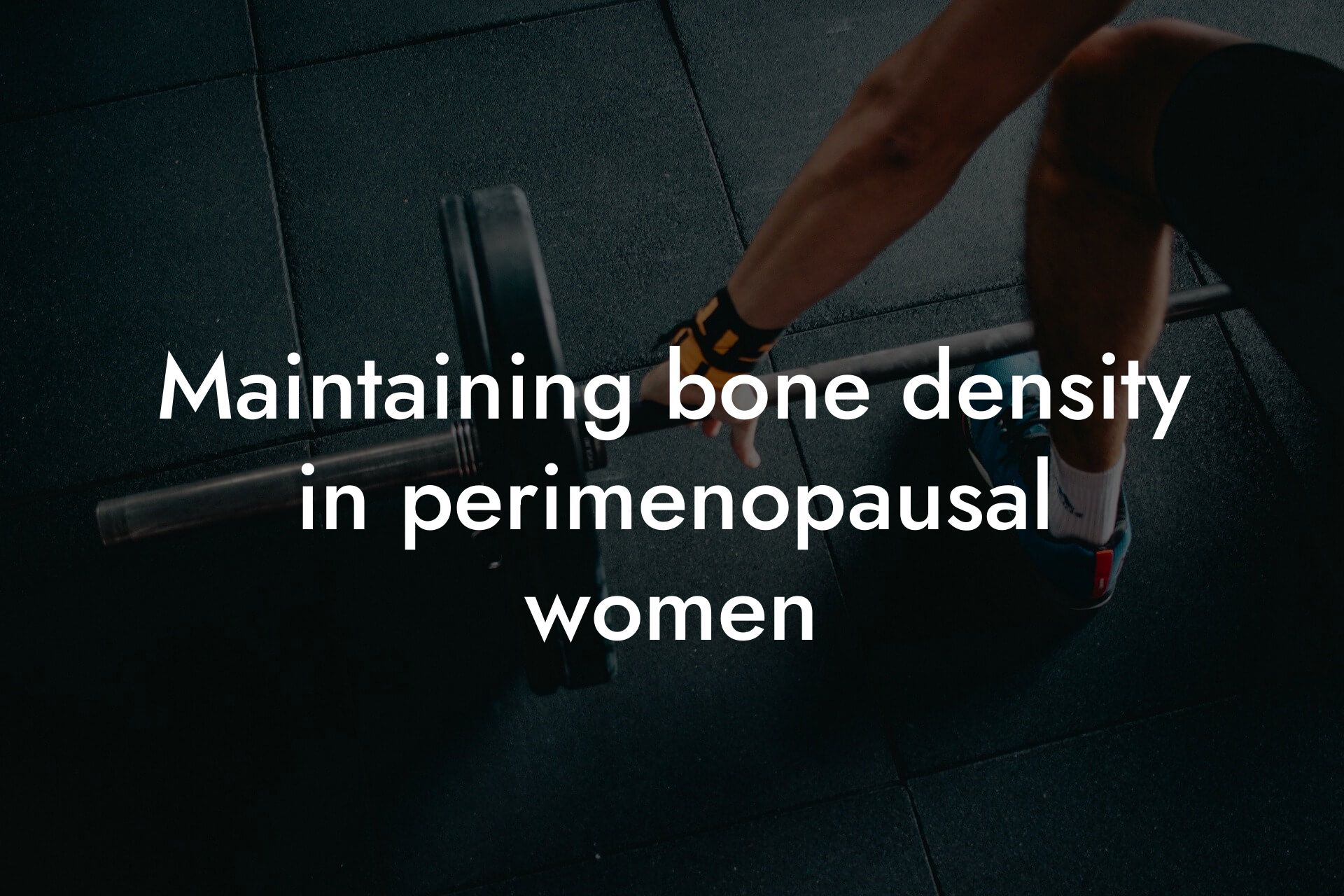As a high-earning professional, taking care of your physical appearance and overall health is crucial for your career and personal well-being. When you become pregnant, it's essential to adapt your fitness routine to ensure a healthy pregnancy and a smooth transition back to your pre-pregnancy physique. At Tano Performance Group, we understand the importance of prioritizing your health and fitness during this critical period. In this article, we'll provide you with expert advice and fitness tips specifically designed for pregnant professionals like you.
Table of Contents
- Understanding the Importance of Prenatal Fitness
- Modifying Your Workout Routine During Pregnancy
- Safe Exercises for Pregnant Professionals
- Exercises to Avoid During Pregnancy
- Staying Hydrated and Fueled During Pregnancy
- Body Assessment and Monitoring During Pregnancy
- Postpartum Fitness and Recovery
- Frequently Asked Questions
Understanding the Importance of Prenatal Fitness
Regular exercise during pregnancy offers numerous benefits for both you and your baby. It can help:
- Reduce the risk of gestational diabetes and hypertension
- Improve your mood and reduce stress levels
- Enhance your overall physical fitness and endurance
- Support a healthy weight gain and postpartum recovery
- Decrease the risk of complications during delivery and postpartum
However, it's essential to approach prenatal fitness with caution and consult with your healthcare provider to create a personalized exercise plan that suits your needs and health status.
Modifying Your Workout Routine During Pregnancy
As your body undergoes significant changes during pregnancy, it's crucial to adapt your workout routine to accommodate these changes. Here are some essential modifications to make:
- Avoid high-impact exercises that can put excessive stress on your joints
- Replace heavy weightlifting with lighter weights and higher reps
- Incorporate exercises that strengthen your core and pelvic floor muscles
- Focus on low-to-moderate intensity aerobic exercises, such as walking, swimming, or cycling
- Listen to your body and take regular breaks to rest and hydrate
Safe Exercises for Pregnant Professionals
Here are some safe and effective exercises you can incorporate into your prenatal fitness routine:
- Kegel exercises to strengthen your pelvic floor muscles
- Pelvic tilts and bridging to improve your core strength
- Modified squats and lunges to maintain lower body strength
- Yoga and Pilates to improve flexibility and balance
- Swimming and water aerobics to reduce joint stress
Exercises to Avoid During Pregnancy
While exercise is essential during pregnancy, there are certain exercises that you should avoid or approach with caution:
- Contact sports that increase the risk of injury or trauma
- High-impact exercises that can cause joint stress or discomfort
- Exercises that involve bending or twisting, which can put pressure on your back
- Hot yoga or Pilates, which can increase your risk of overheating
- Scuba diving, which can pose a risk to your baby's health
Staying Hydrated and Fueled During Pregnancy
Proper hydration and nutrition are critical during pregnancy. Here are some tips to help you stay hydrated and fueled:
- Drink at least 8-10 glasses of water per day
- Avoid sugary drinks and caffeine, which can dehydrate you
- Incorporate protein-rich foods, such as lean meats and fish, into your diet
- Eat frequent, balanced meals to maintain your energy levels
- Consider taking prenatal vitamins and supplements to support your health
Body Assessment and Monitoring During Pregnancy
At Tano Performance Group, we understand the importance of monitoring your body composition and health metrics during pregnancy. Our DEXA machine provides a comprehensive body assessment, including:
- Body fat percentage and distribution
- Bone density and mineral content
- Lean mass and muscle distribution
- Visceral fat and metabolic health
By tracking these metrics, you can gain valuable insights into your overall health and make informed decisions about your fitness routine and nutrition plan.
Postpartum Fitness and Recovery
After giving birth, it's essential to prioritize your postpartum recovery and fitness. Here are some tips to help you get back on track:
- Wait for your healthcare provider's clearance before resuming exercise
- Start with gentle, low-impact exercises and gradually increase intensity
- Incorporate exercises that target your core and pelvic floor muscles
- Focus on functional exercises that improve your daily mobility and strength
- Consider working with a postpartum fitness specialist or personal trainer
By following these fitness tips and guidelines, you can maintain a healthy and active lifestyle during pregnancy, ensure a smooth postpartum recovery, and get back to your pre-pregnancy physique. Remember to always consult with your healthcare provider and prioritize your health and well-being above all else.
Frequently Asked Questions
Is it safe to exercise during pregnancy?
Yes, it is safe to exercise during pregnancy as long as you have your healthcare provider's approval and follow the guidelines. In fact, exercising during pregnancy can have numerous benefits for both you and your baby, such as reducing the risk of gestational diabetes, improving mood, and increasing energy levels. However, it's essential to listen to your body and adjust your workout routine accordingly.
What are the benefits of exercising during pregnancy?
Exercising during pregnancy can have numerous benefits, including reduced risk of gestational diabetes, improved mood, increased energy levels, and a faster recovery after childbirth. It can also help you maintain a healthy weight, improve your posture, and reduce the risk of complications during delivery.
What exercises are safe during pregnancy?
Low-impact exercises such as walking, swimming, cycling, and prenatal yoga are excellent options during pregnancy. You can also modify your usual workout routine to accommodate your changing body, such as replacing high-impact exercises with low-impact alternatives. However, it's essential to avoid any exercises that involve bending, twisting, or contact sports.
What exercises should I avoid during pregnancy?
It's best to avoid exercises that involve bending, twisting, or contact sports, as they can increase the risk of injury or complications. You should also avoid exercises that require lying flat on your back, especially after the first trimester, as it can cause compression on the vena cava and reduce blood flow to the baby.
How often should I exercise during pregnancy?
Aim to exercise at least 3-4 times a week, with at least one day of rest in between. However, it's essential to listen to your body and adjust your workout routine accordingly. If you're feeling fatigued or experiencing any discomfort, it's best to reduce the frequency or intensity of your workouts.
Can I continue my usual workout routine during pregnancy?
It's best to modify your usual workout routine to accommodate your changing body. You may need to reduce the intensity, frequency, or duration of your workouts, especially as your pregnancy progresses. It's essential to listen to your body and avoid any exercises that cause discomfort or pain.
How can I modify my workout routine during pregnancy?
Modify your workout routine by replacing high-impact exercises with low-impact alternatives, reducing the intensity and frequency of your workouts, and incorporating exercises that target your core and pelvic floor muscles. You can also incorporate prenatal yoga or Pilates to improve your flexibility and balance.
What are Kegel exercises, and why are they important during pregnancy?
Kegel exercises are pelvic floor exercises that can help strengthen your muscles and improve bladder control during pregnancy. They can also help reduce the risk of incontinence and prolapse after childbirth. To do Kegel exercises, squeeze your pelvic muscles as if you're stopping the flow of urine, hold for 10 seconds, and release.
How can I stay hydrated during exercise?
Staying hydrated is crucial during exercise, especially during pregnancy. Aim to drink at least 8-10 glasses of water per day, and make sure to drink water before, during, and after your workouts. You can also consider incorporating electrolyte-rich drinks or snacks to replenish lost electrolytes.
What should I wear during exercise?
Wear comfortable, breathable clothing that allows for a full range of motion. Avoid tight or constricting clothing that can impede your movement or cause discomfort. You may also consider wearing a belly support or maternity workout gear to provide additional support and comfort.
How can I manage morning sickness during exercise?
If you're experiencing morning sickness, try exercising at a time when you're feeling most energized and comfortable. Avoid exercising on an empty stomach, and consider incorporating small, frequent meals or snacks to help manage your symptoms. You can also try incorporating ginger or peppermint to help alleviate nausea.
Can I exercise during the first trimester?
Yes, you can exercise during the first trimester, but it's essential to listen to your body and avoid any exercises that cause discomfort or pain. You may need to modify your workout routine to accommodate any morning sickness or fatigue you may be experiencing.
How can I stay motivated to exercise during pregnancy?
Stay motivated by setting realistic goals, finding an exercise buddy, and incorporating exercises that you enjoy. You can also try incorporating prenatal fitness classes or online workout programs specifically designed for pregnant women. Remember, every small step counts, and exercising during pregnancy can have numerous benefits for both you and your baby.
What are the signs of overexertion during pregnancy?
Signs of overexertion during pregnancy include dizziness, lightheadedness, nausea, vomiting, and vaginal bleeding. If you experience any of these symptoms, stop exercising immediately and consult with your healthcare provider.
Can I exercise during the third trimester?
Yes, you can exercise during the third trimester, but it's essential to listen to your body and avoid any exercises that cause discomfort or pain. You may need to modify your workout routine to accommodate any physical limitations or discomfort you may be experiencing.
How can I incorporate strength training during pregnancy?
Incorporate strength training exercises that target your core, pelvic floor, and leg muscles. You can use light weights, resistance bands, or bodyweight exercises to improve your strength and endurance. Avoid any exercises that involve heavy lifting or bending.
Can I exercise after giving birth?
Yes, you can exercise after giving birth, but it's essential to wait until your healthcare provider gives you the green light. Typically, this is around 6-8 weeks postpartum. Start with gentle exercises, such as walking or pelvic floor exercises, and gradually increase the intensity and frequency of your workouts.
How can I get back in shape after pregnancy?
Get back in shape after pregnancy by incorporating gentle exercises, such as walking or pelvic floor exercises, and gradually increasing the intensity and frequency of your workouts. Focus on strengthening your core and pelvic floor muscles, and incorporate exercises that target your entire body. Remember to listen to your body and take rest days as needed.
What are the benefits of postpartum exercise?
The benefits of postpartum exercise include improved mood, increased energy levels, and a faster recovery after childbirth. Exercise can also help you lose weight, improve your posture, and reduce the risk of complications during future pregnancies.
How can I balance exercise with motherhood?
Balance exercise with motherhood by incorporating exercises that you can do with your baby, such as stroller walks or babywearing workouts. You can also try incorporating online workout programs or fitness classes that cater to new mothers. Remember to prioritize self-care and take rest days as needed.
What are the common myths about exercising during pregnancy?
Common myths about exercising during pregnancy include the idea that exercise can cause miscarriage, that you should avoid exercise altogether, or that exercise can harm the baby. However, the American College of Obstetricians and Gynecologists (ACOG) recommends exercising during pregnancy, as long as you have your healthcare provider's approval and follow the guidelines.
How can I find a prenatal fitness class near me?
Find a prenatal fitness class near you by searching online, asking your healthcare provider for recommendations, or checking with local fitness studios or community centers. You can also try incorporating online prenatal fitness classes or workout programs specifically designed for pregnant women.
What are the benefits of prenatal yoga?
The benefits of prenatal yoga include improved flexibility, reduced stress and anxiety, and improved posture. Prenatal yoga can also help you prepare for childbirth, reduce the risk of complications during delivery, and improve your overall physical and mental well-being.
Here are some related articles you might love...
- Body composition considerations for vegetarian athletes
- Maintaining bone density in perimenopausal women
- Tailored fitness programs for executives
- The unique challenges of maintaining fitness in high-stress jobs
- How cultural differences impact body composition goals
- How to manage body composition after childbirth
- Fitness and nutrition strategies for shift workers
- Body composition strategies for women in leadership
- Fitness programs for older professionals
Zak Faulkner
Zak Faulkner is a leading authority in the realm of physical health and body composition analysis, with over 15 years of experience helping professionals optimise their fitness and well-being. As one the experts behind Tano Performance Group, Zak has dedicated his career to providing in-depth, science-backed insights that empower clients to elevate their physical performance and overall health.
With extensive knowledge of DEXA technology, Zak specializes in delivering comprehensive body assessments that offer precise data on body fat, muscle mass, bone density, and overall physique. His expertise enables individuals to make informed decisions and achieve their fitness goals with accuracy and confidence. Zak’s approach is rooted in a deep understanding of human physiology, combined with a passion for helping clients unlock their full potential through personalised strategies.
Over the years, Zak has earned a reputation for his commitment to excellence, precision, and client-focused service. His guidance is trusted by top professionals who demand the best when it comes to their health. Whether advising on fitness programs, nutritional strategies, or long-term wellness plans, Zak Faulkner’s insights are a valuable resource for anyone serious about taking their health and fitness to the next level.
At Tano Performance Group, Zak continues to lead our Content Team revolutionising how professionals approach their physical health, offering unparalleled expertise that drives real results.




